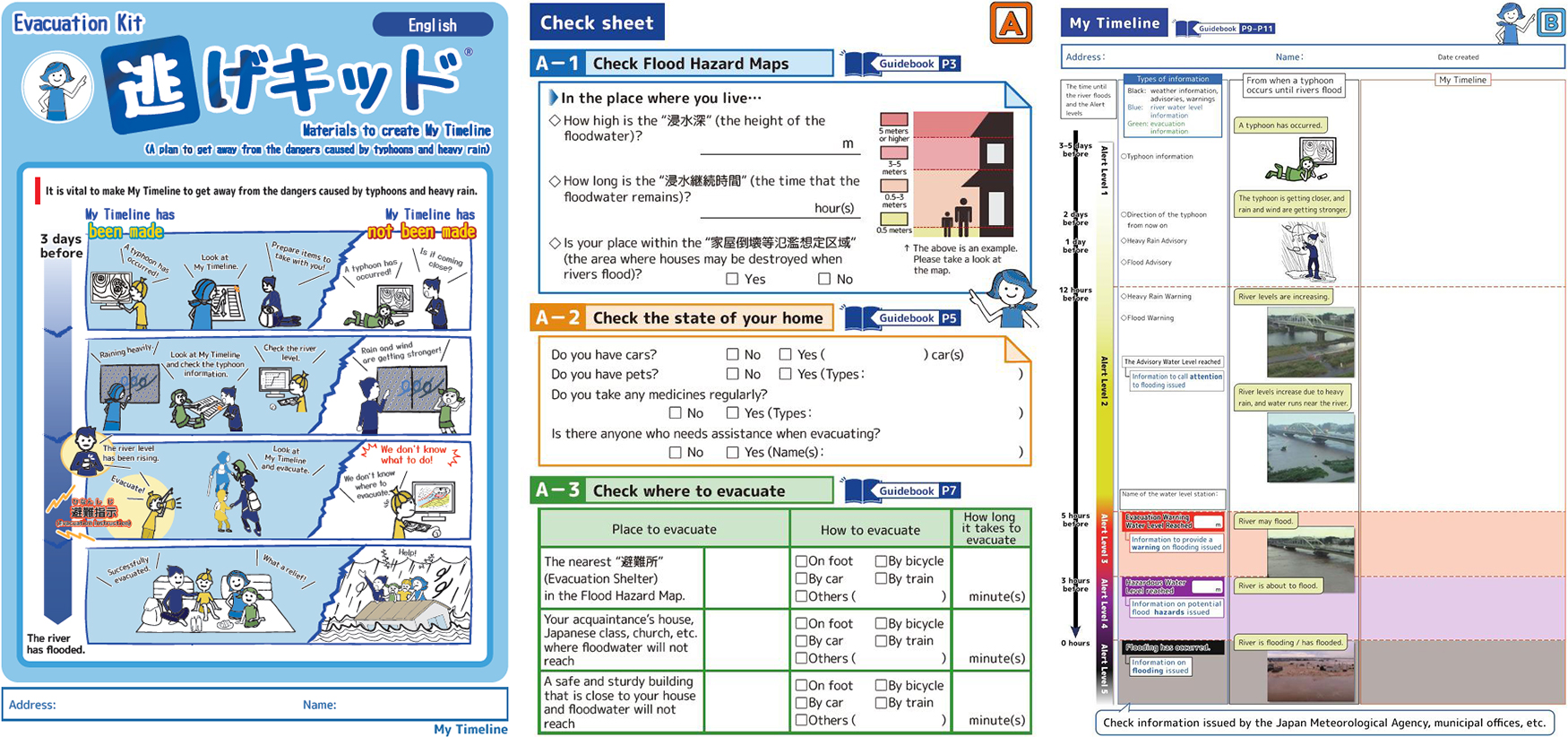Natural Disasters
Preparations Before Heavy Rains/Typhoons
The damage that a major typhoon or rainstorm can cause may be lessened by making preparations in advance.
When the news or weather forecast reports a typhoon or storm approaching your area, take the following steps.

Inside the Home
- You may be unable to leave your home, so prepare plenty of water and food.
- The power may go out. Prepare a flashlight and charge your phone.
- The water may stop. Fill the bathtub with water in advance.
For those on the ground floor…
- Water may come into the entrance or elsewhere on the ground floor. Move items to higher locations.
- Remove electrical appliances from power outlets.
If strong winds blow…
- Windows may break, so to prevent broken glass from flying into the home, close the curtains and use a clip etc. to hold them shut.

Outside the Home
- To allow water to flow freely, clean rain gutters and balcony drains.
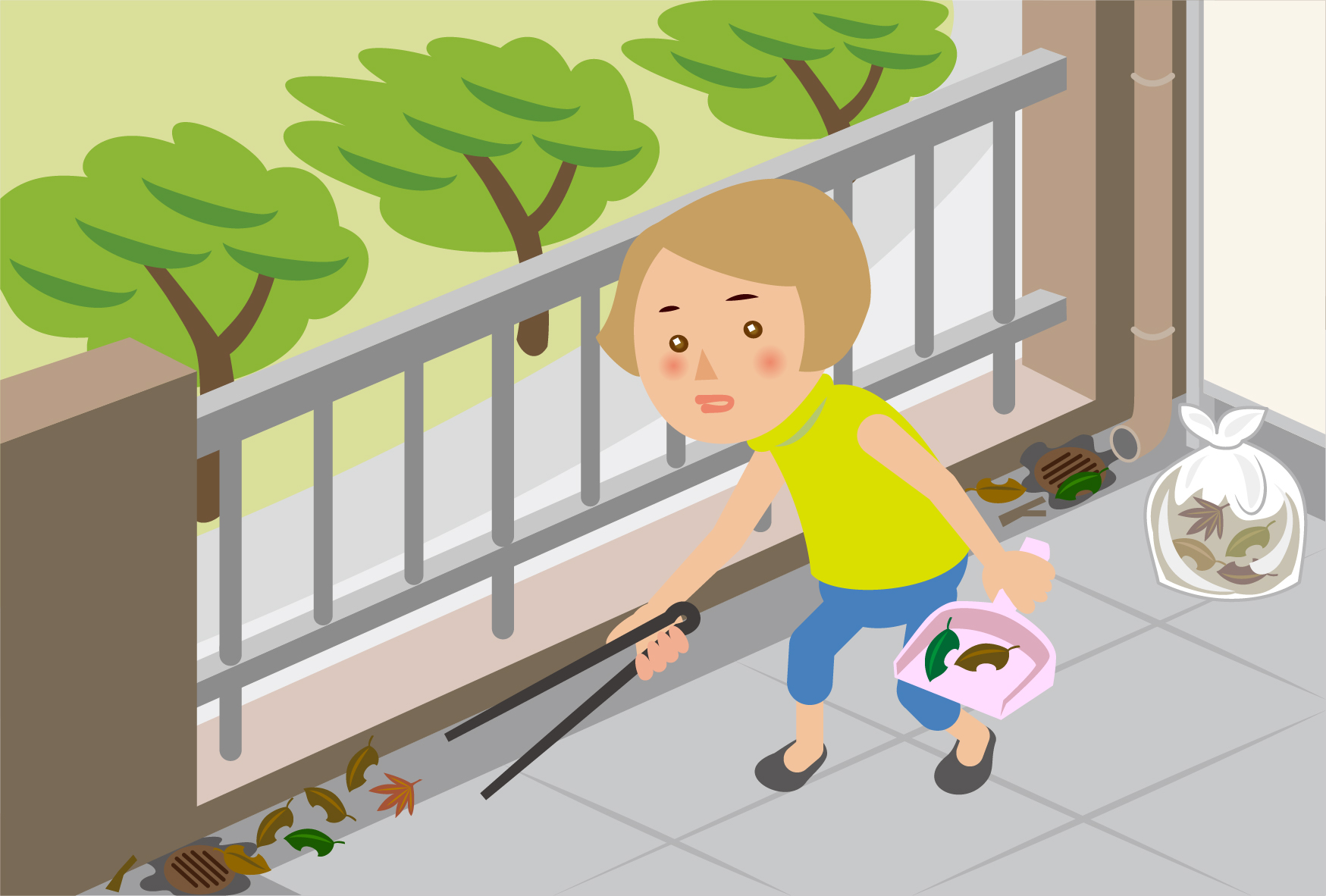
-
Take the following steps to prevent items outside being blown away by strong winds, or washed away by the rain:
- Move potted plants, sandals and other garden/balcony items indoors.
- For large items that are difficult to fit in the home, such as laundry poles and bicycles, lay them on the ground so they cannot fall.
- Move potted plants, sandals and other garden/balcony items indoors.
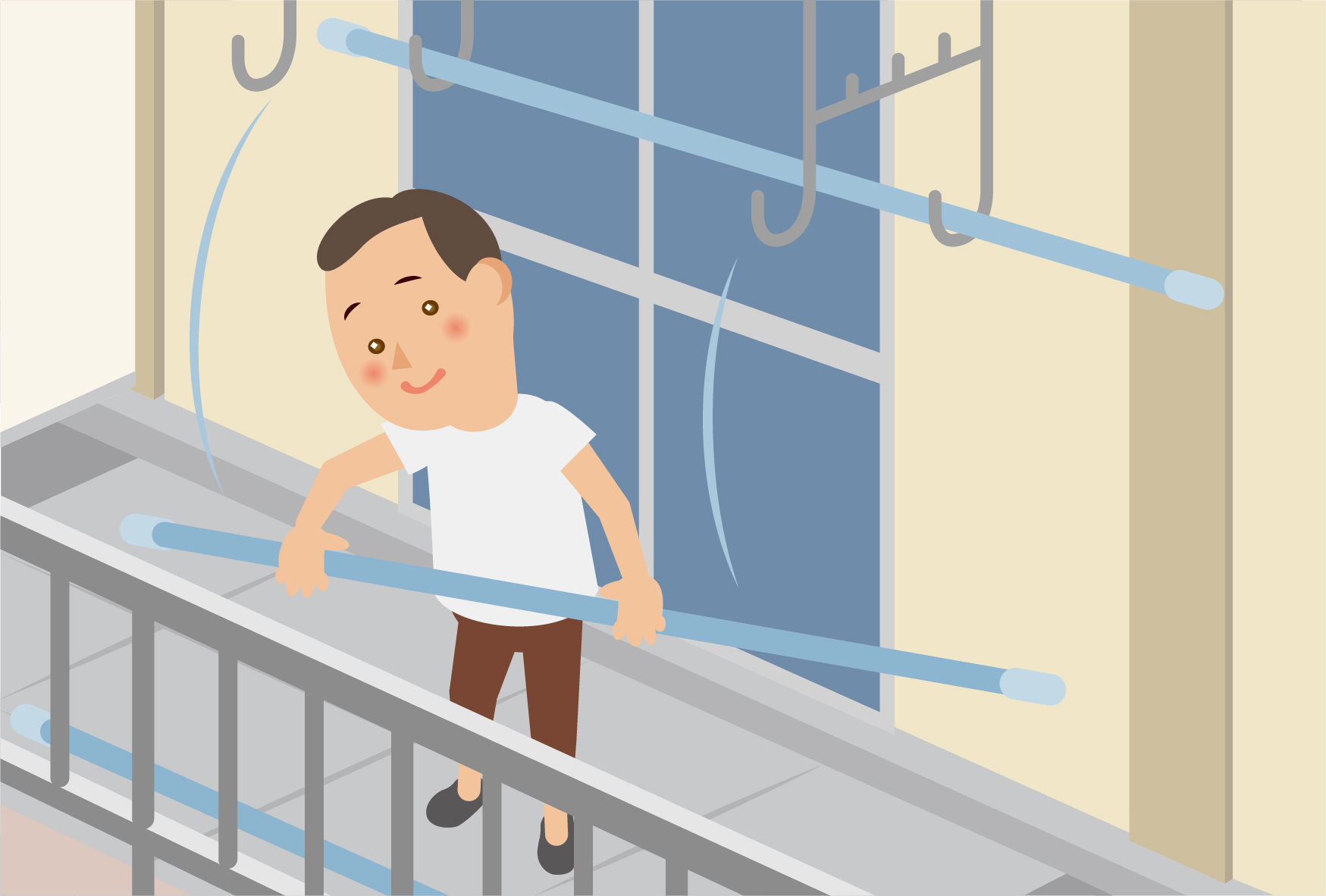
Gather Information
- Check the hazard map to see if your area is at risk of flooding or landslides. Even if you are not near a river, storm drains and sewer systems may overflow, leading to flood water entering homes.
You can check on the following website:
Ministry of Land, Infrastructure, Transport and Tourism Hazard Map Portal Site (Japanese only)
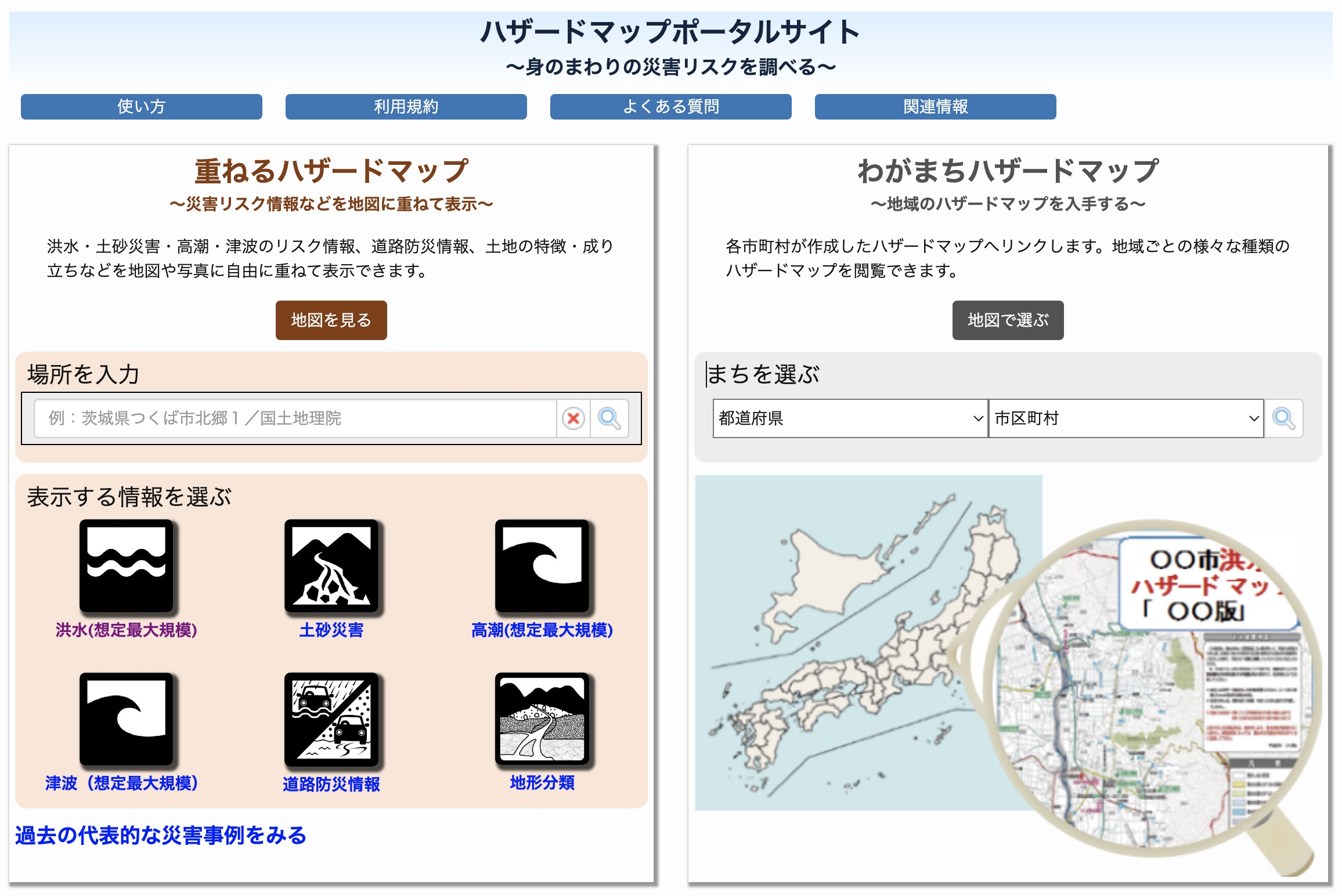
-
Decide in advance where to go, and how to get there, should danger approach. Check for nearby strong buildings with at least two floors, or evacuation shelters.
It is important to move to a friend or family member's home at the earliest opportunity, if your location is at risk.
-
You can check the following site to find evacuation shelters:
Tokyo Disaster Prevention Map (Machine translation available [English, Korean, Chinese])
-
See Column 2: “My Timeline” at the end of this section for information on making an evacuation plan.
-
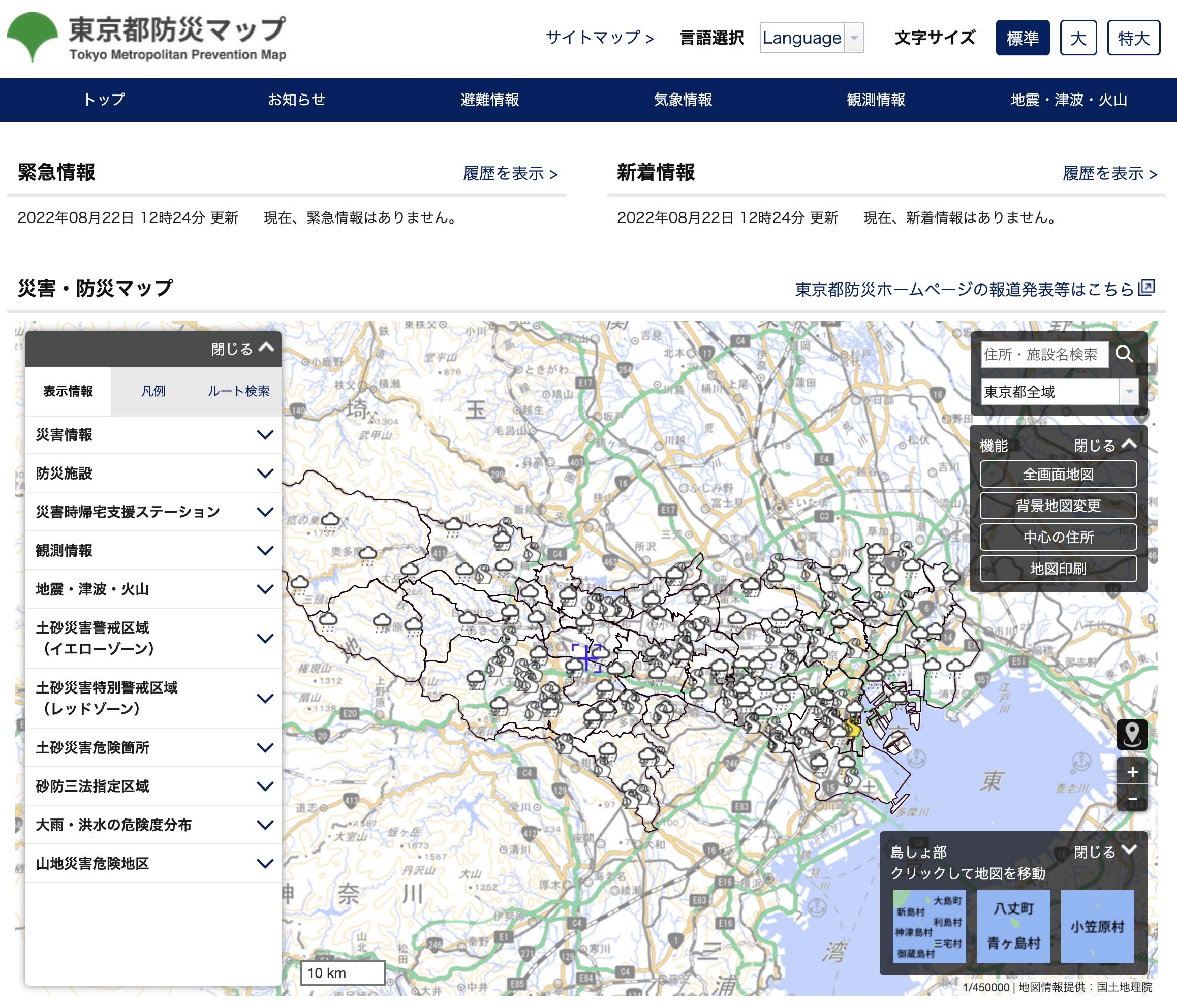
-
Be sure to check the weather forecast regularly to see when typhoons or heavy rains will come.
Japan Meteorological Agency Homepage (14 Languages)
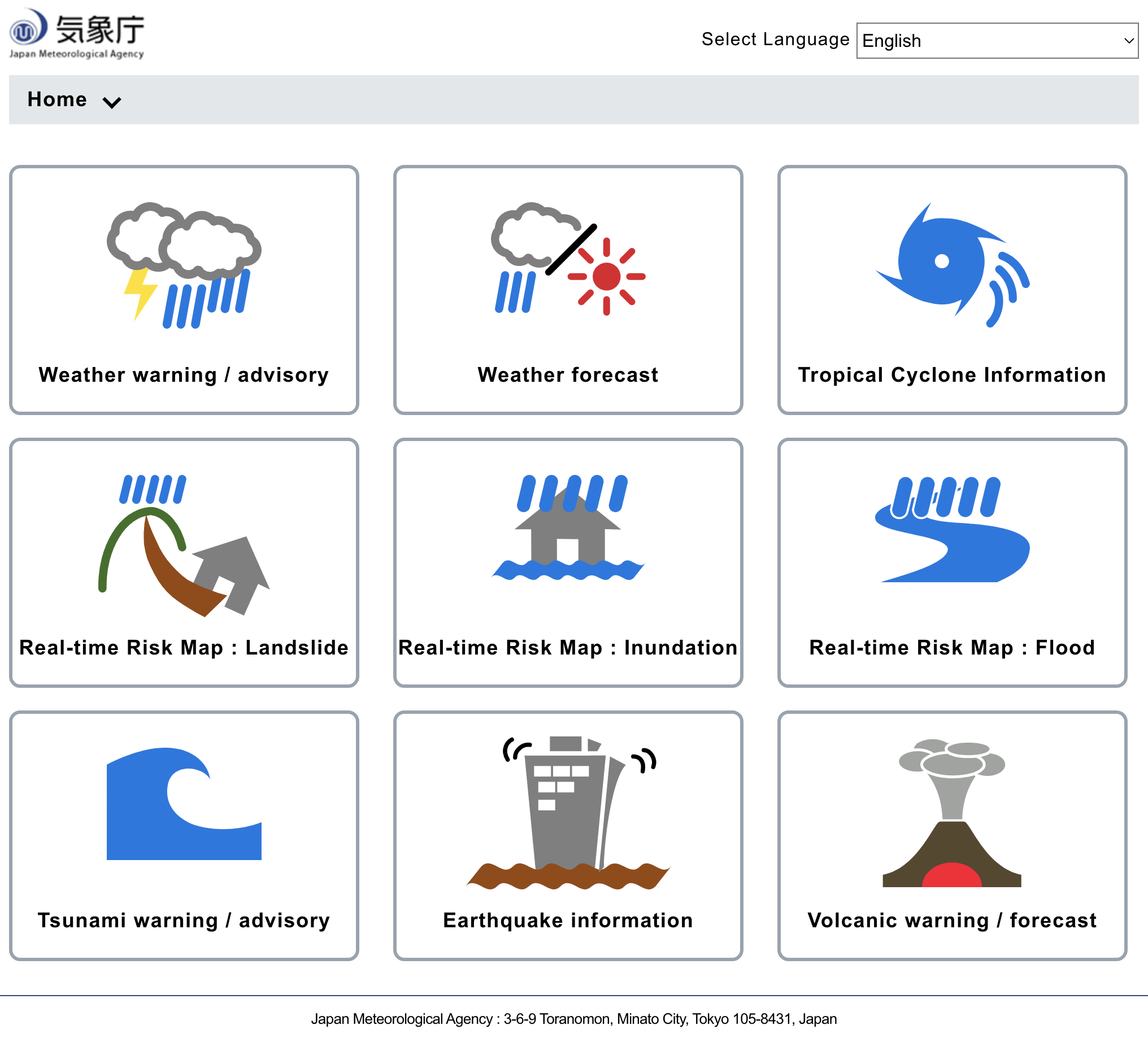
- Train and bus services may be suspended. Check to see if your local public transport services are affected.
If a Warning is Given by Local Authorities
If the Alert Level is 3 (evacuation of the elderly etc.) or higher, the local authorities will send an announcement via mobile phones.
(Announcements may not be delivered due to your phone's settings.)
If such an announcement arrives:
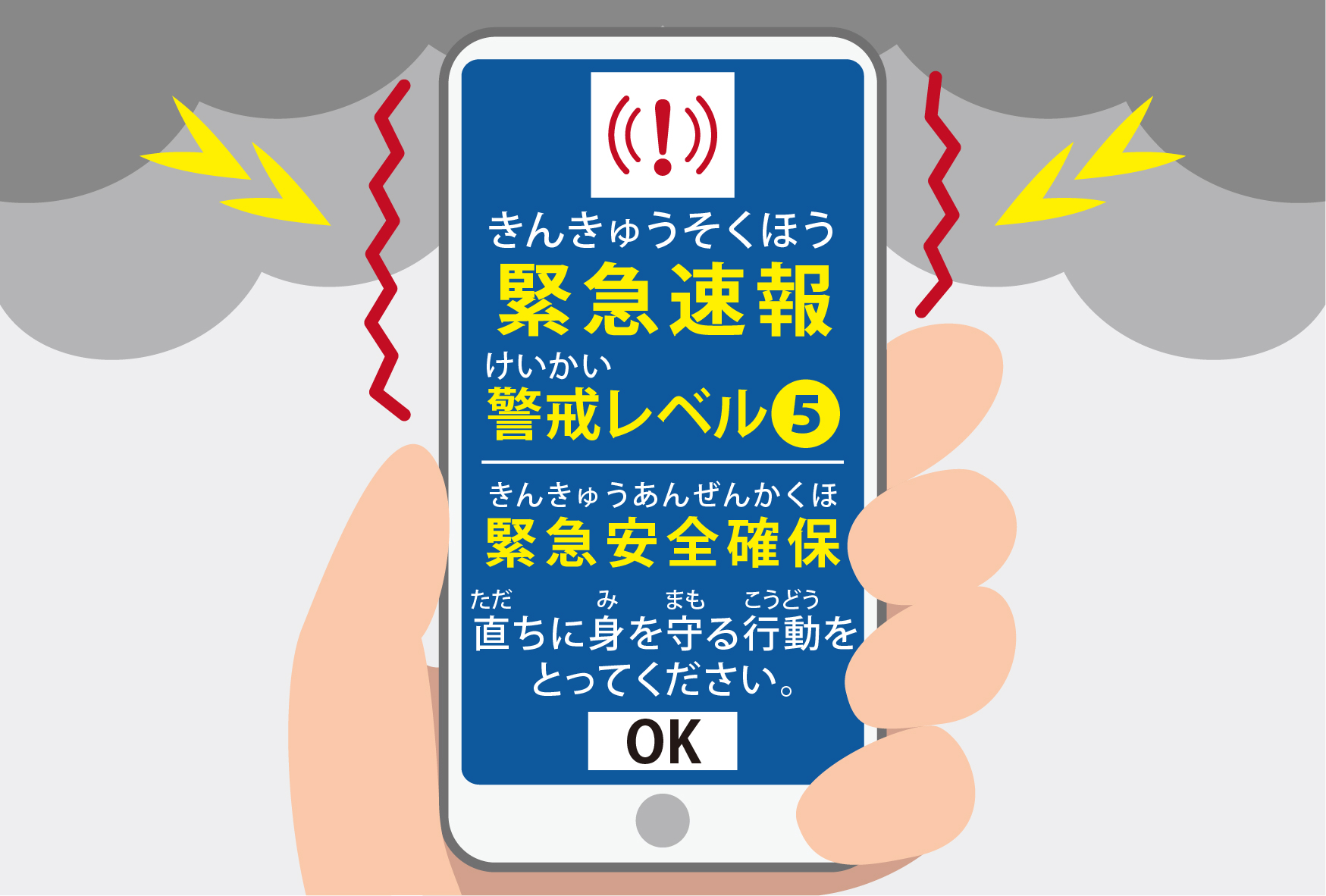
- Do not go outside, except to evacuate.
-
Check the situation in your local area.
-
You can check the locations that have had warnings issued, and which locations have open evacuation shelters, via the following site:
Tokyo Disaster Prevention Map (Machine translation available [English, Korean, Chinese])
-
You can check the locations that have had warnings issued, and which locations have open evacuation shelters, via the following site:
-
Take the steps indicated by the current Alert Level.
-
Check the following article for information on the appropriate steps for each Alert Level:
Alert Levels (8 Languages)
-
If You Have to Go Outside
If you have no choice but to go outside, bear the following points in mind:
- Do not try to board elevators, as the electricity may go out.
- Do not attempt to use underpasses.
- Do not go near rivers.
- Do not approach manholes.
- Do not go near mountains or cliffs.
- Do not use cars, as flood waters may prevent them from working.
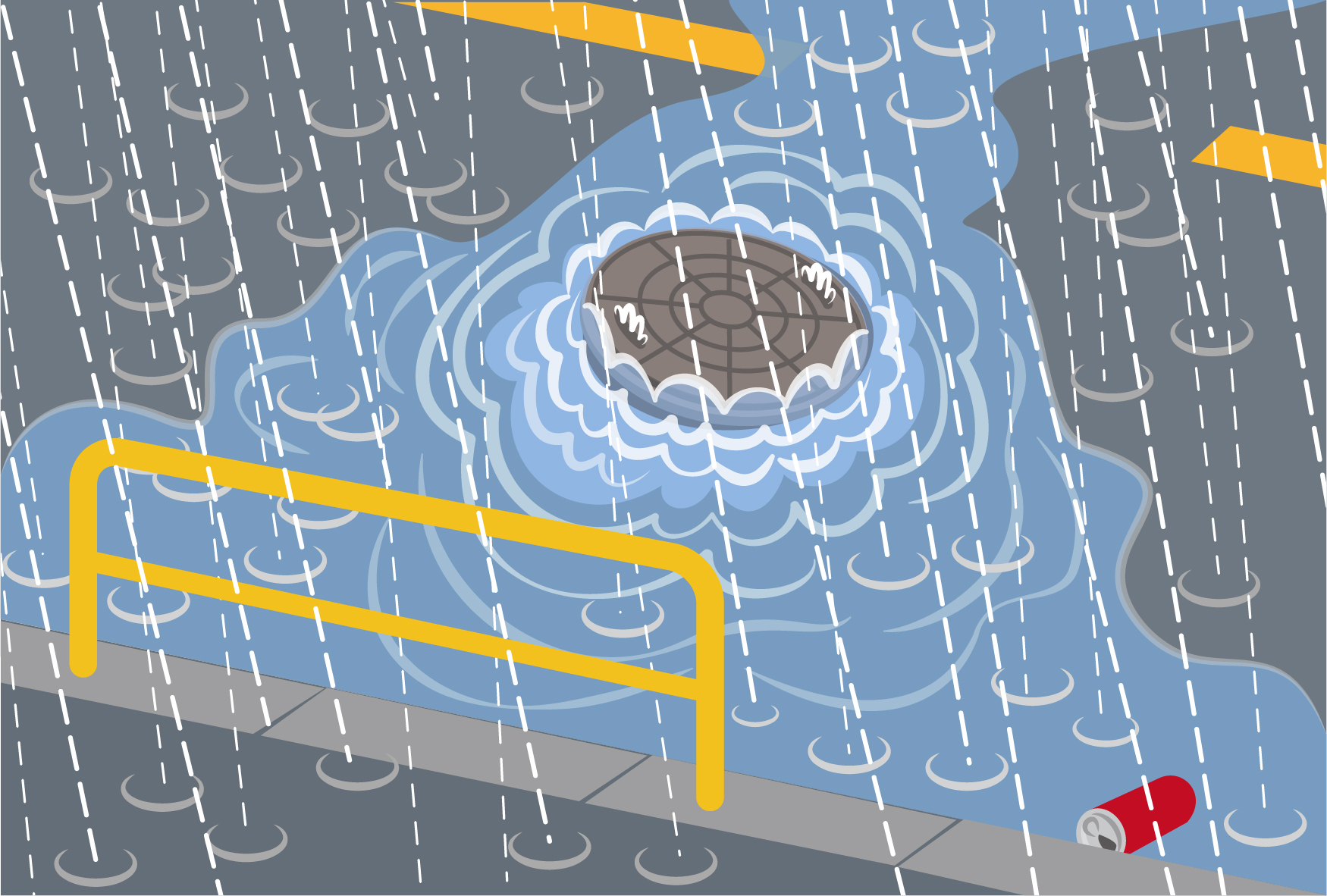
What Not To Do
After prolonged rain storms, or heavy rainfall brought by a typhoon, rivers can suddenly overflow, and mountainsides may collapse.
Do not, under any circumstances, go to rivers or mountains to check on the situation.
When Evacuating
When evacuating, rather than traveling far, go to a nearby strong building with at least two storeys, or to an evacuation shelter.
Evacuate before it gets dark, and do so in pairs or groups if possible.
If evacuating is difficult…
Find a safe place in the home, preferably higher than the second floor, far from the building entrance, windows, and not facing a mountainside.
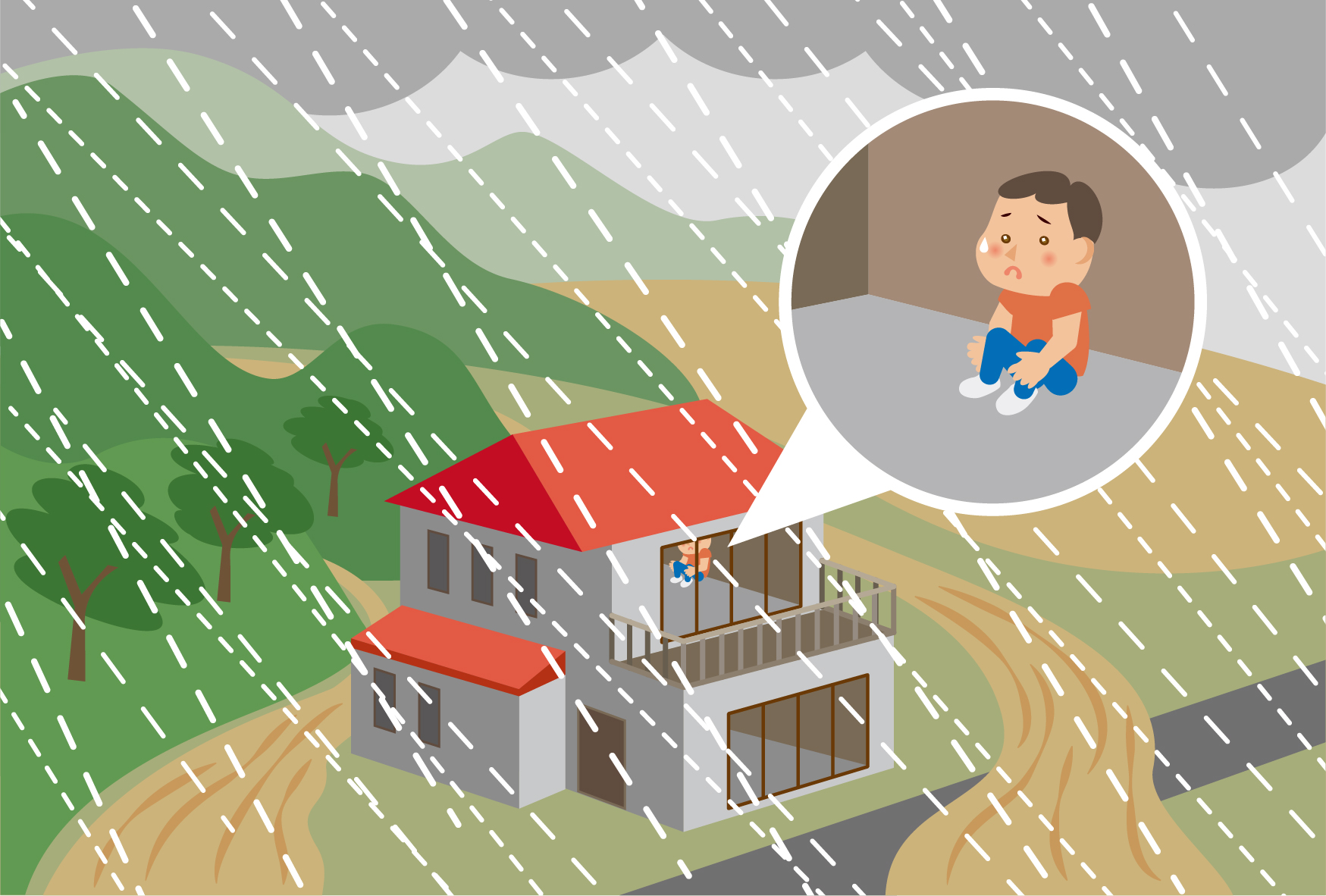
When the rain stops…
Even after the rain stops, rivers may overflow with all the accumulated water. Proceed with the evacuation for the time being.
Column 1: Guerrilla Rainstorm
When extremely strong rain falls in a short space of time over a small area, it is known in Japan as a “guerrilla rainstorm”. Before they occur, the sky gets suddenly darker, and cold winds blow.
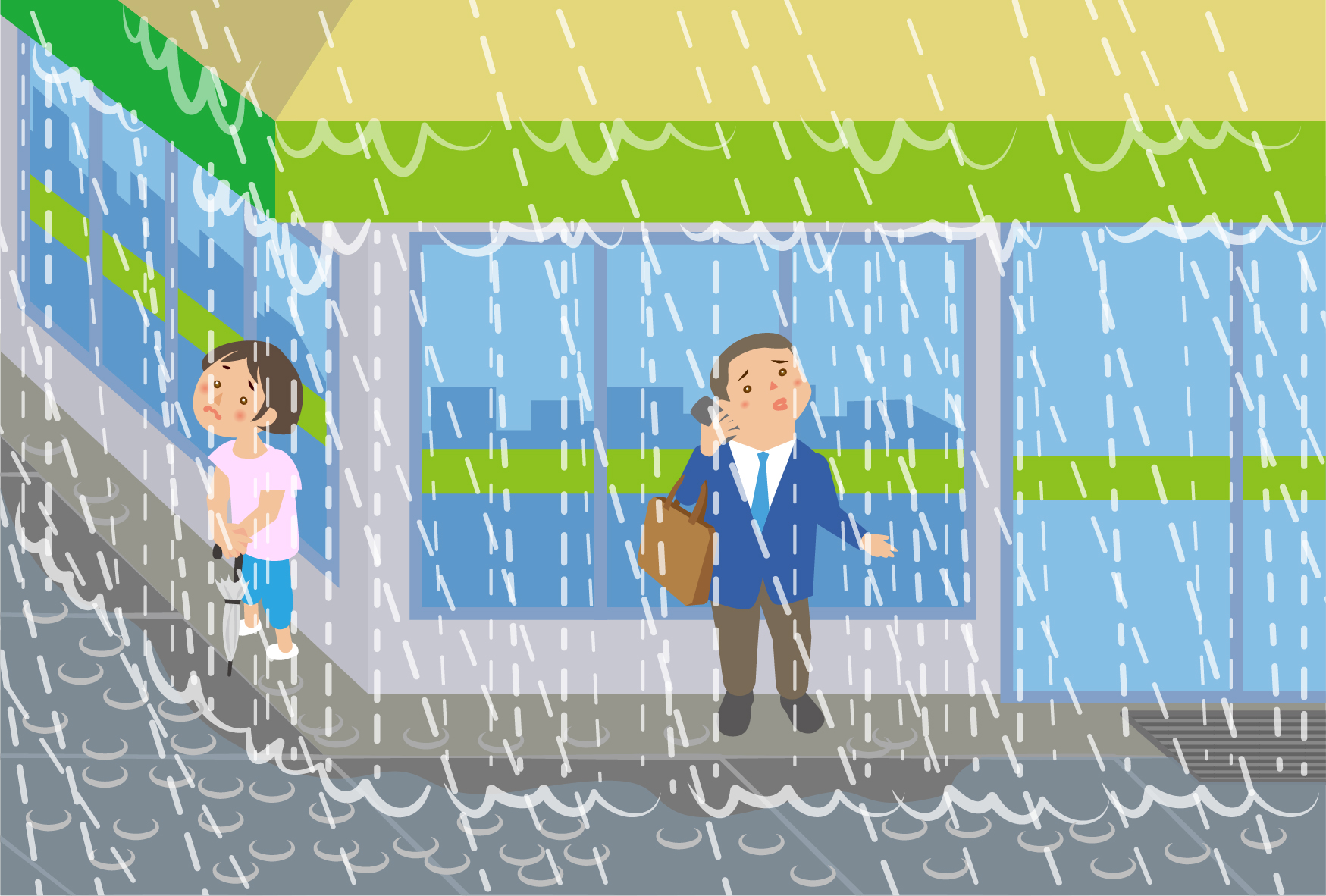
If you encounter a guerrilla rainstorm, take the following steps:
- Wait for the rain to stop in a safe location.
- If you are underground, head above ground as soon as possible.
- Stay away from rivers.
-
Find out when rain clouds will finish passing over by checking the rain cloud radar:
Weathernews「rain radar」 (Japanese)
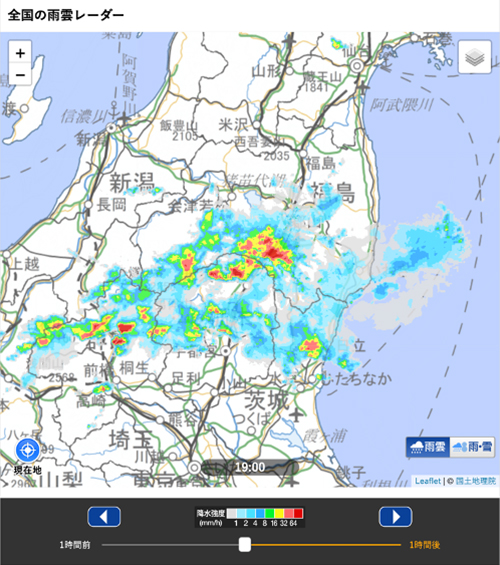
Column 2: My Timeline
“My Timeline” is a tool for making a plan for which actions to take and when in the event of a major typhoon or rainstorm.
Answer the questions to create your own evacuation plan.
It is available in 14 languages.
Council of Local Authorities for International Relations: My Timeline (Japanese)
